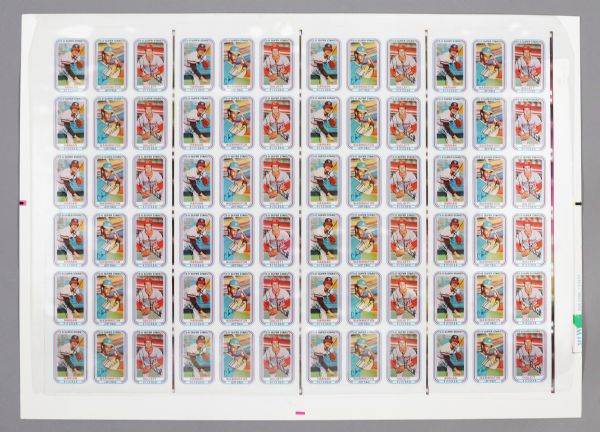I think when I was a kid I had a Billy Williams model glove and then a Tom Seaver model. In the 1980s I bought my last glove to be used to play baseball, a Chet Lemon model. That glove continued with me to ballparks where I liked to sit in the outfield. Batting practice was lots of fun back then.
I get lots of comments when I mention that I have a Chet Lemon model glove. I guess people imagine that only Hall of Famers have contracts with glove manufacturers. No one has ever mentioned the obvious problem with all of the gloves that I had - I'm left-handed and none of these players threw with their left hand.
I was surprised that Lemon was included in three Kellogg's sets - 1980 to 1982. He was the only White Sox player in the 1981 set. Claudell Washington was with Lemon in the 1980 set and Carlton Fisk was in the 1982 set.
Sorry for the blurry pictures. I'm too tired to dig through the cards to find his cards.
Lemon played from 1975 - 1990. He played for the White Sox for seven years and then lasted 9 more years with the Tigers. I didn't remember his lasting that long with Detroit.
He was a three-time all-star who batted .300 three times, once while only playing 105 games in 1978. He amassed 1,875 career hits. Since he was primarily a centerfielder I'm surprised that he only had 58 career steals and that he was caught 76 times.
He led the league in being hit by pitch four times. He ranks 22nd all-time in this category.
He was on the 1984 Tigers team that won the World Series. He was 0-for-13 in the ALCS but he redeemed himself by going 5-for-17 in the World Series.
Lemon still holds the AL record for most putouts by an outfielder in a season. In 1977 he recorded 512 putouts. He only played 149 games in the outfield that year. That's well over three per game. Only two other AL outfields have surpassed 491 putouts in a season. One of the two was Dwayne Murphy who appeared in the 1982 Kellogg's set. The other was Dom Dimaggio, brother of Joe and Vince.
I like the 10 players that the computer used by Baseball-reference.com comes up with as most similar to Lemon. That reminds me of what a good player Lemon was. Here is the list.
- Johnny Callison (928)
- Bobby Murcer (917)
- Jeff Conine (916)
- Amos Otis (915)
- Gus Bell (913)
- Dusty Baker (913)
- Felipe Alou (910)
- Devon White (910)
- Richie Hebner (907)
- Gary Matthews (903)










































